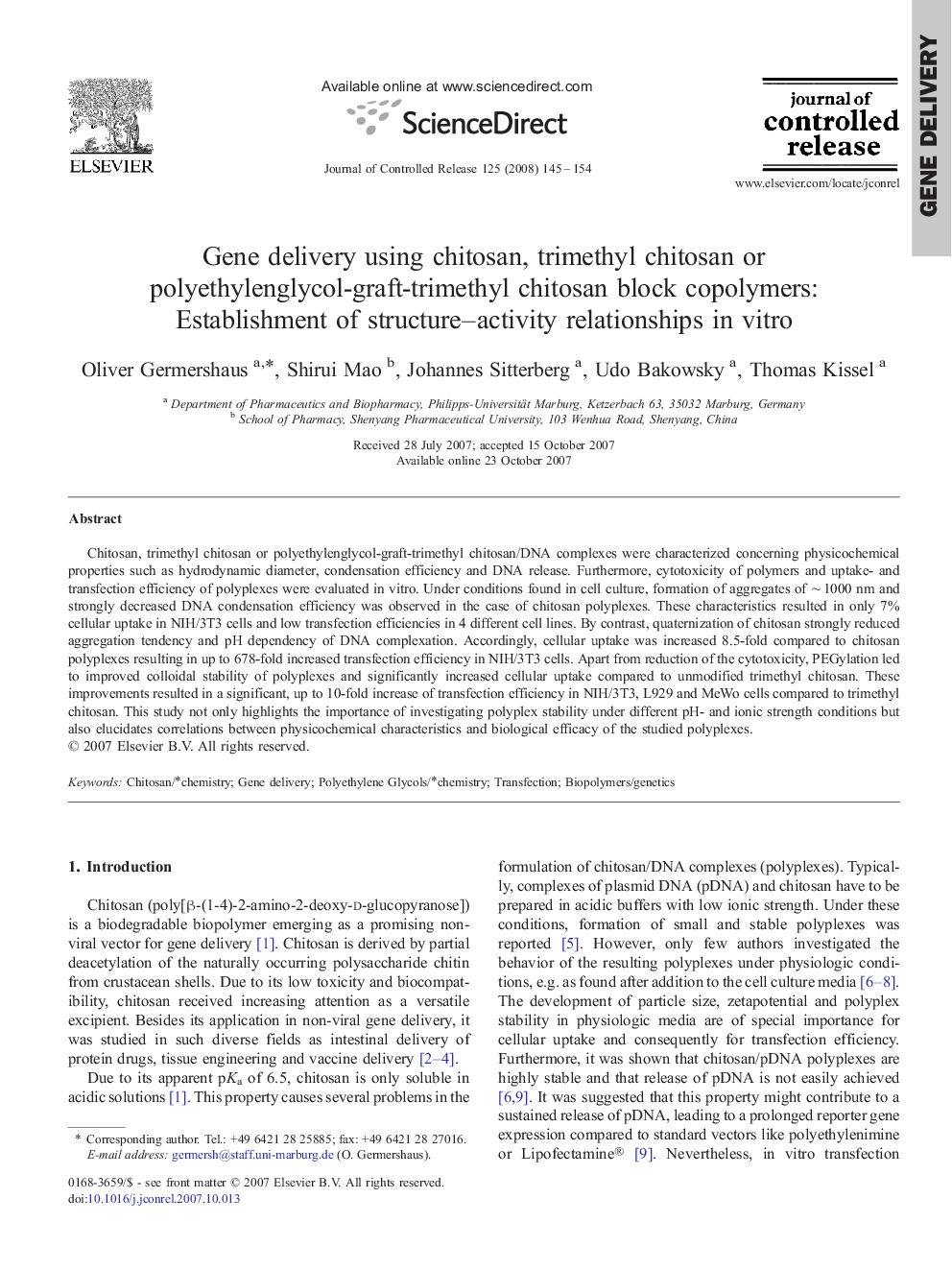| Article ID | Journal | Published Year | Pages | File Type |
|---|---|---|---|---|
| 1426812 | Journal of Controlled Release | 2008 | 10 Pages |
Chitosan, trimethyl chitosan or polyethylenglycol-graft-trimethyl chitosan/DNA complexes were characterized concerning physicochemical properties such as hydrodynamic diameter, condensation efficiency and DNA release. Furthermore, cytotoxicity of polymers and uptake- and transfection efficiency of polyplexes were evaluated in vitro. Under conditions found in cell culture, formation of aggregates of ∼ 1000 nm and strongly decreased DNA condensation efficiency was observed in the case of chitosan polyplexes. These characteristics resulted in only 7% cellular uptake in NIH/3T3 cells and low transfection efficiencies in 4 different cell lines. By contrast, quaternization of chitosan strongly reduced aggregation tendency and pH dependency of DNA complexation. Accordingly, cellular uptake was increased 8.5-fold compared to chitosan polyplexes resulting in up to 678-fold increased transfection efficiency in NIH/3T3 cells. Apart from reduction of the cytotoxicity, PEGylation led to improved colloidal stability of polyplexes and significantly increased cellular uptake compared to unmodified trimethyl chitosan. These improvements resulted in a significant, up to 10-fold increase of transfection efficiency in NIH/3T3, L929 and MeWo cells compared to trimethyl chitosan. This study not only highlights the importance of investigating polyplex stability under different pH- and ionic strength conditions but also elucidates correlations between physicochemical characteristics and biological efficacy of the studied polyplexes.
